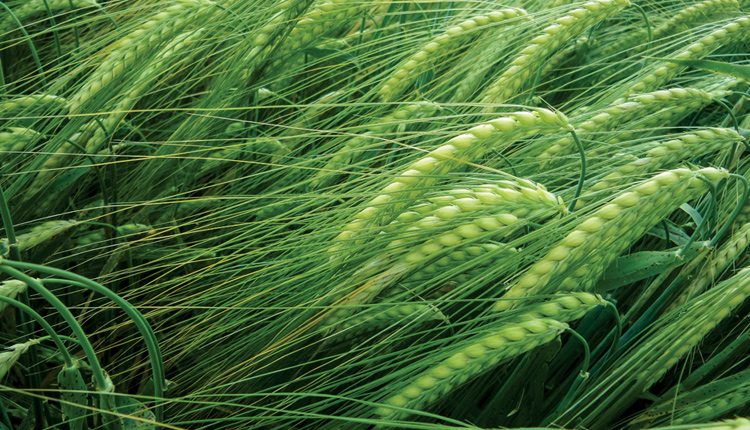Seed industry experts examine what the new variety registration process will mean for the future of the industry.
_x000D_
After about a decade of turbulence in seas of red tape and confusing clarifications, Canada’s seed industry is moving toward smoother waters._x000D_
_x000D_
The variety registration process, according to three who are deeply involved in it, appears set to sail smoothly in 2016 and beyond. Here are some of their thoughts on what has passed, and what’s ahead._x000D_
_x000D_
Registration Review_x000D_
_x000D_
“It’s a positive step,” says Patty Townsend, Canadian Seed Trade Association CEO. “It may not be perfect, but it’s certainly a positive step to a better environment for investment and innovation in agriculture.”_x000D_
_x000D_
The process of changing old registration systems for seed varieties began in 2007 as part of a government-wide initiative to cut red tape._x000D_
_x000D_
Working with the seed sector through the National Forum on Seed, the government came up with a framework for a three-part registration system. It set the stage, but after a few years of operation, it was realized that more needs to be done._x000D_
_x000D_
“So the government took a fresh look at the variety registration system and put out a proposal with four options for variety registrations going forward,” Townsend recalls._x000D_
_x000D_
The Variety Registration Review began in January 2013 with a letter from the Minister of Agriculture to all 14 variety recommending committees in Canada. It asked them to focus on cutting red tape, while fulfilling their mandates for insuring seed safety and quality._x000D_
_x000D_
“The options were considered by the industry,” Townsend says. “There was a whole bunch of input. A year ago or so, the government came up with a proposal for something they thought would best represent the industry’s input, and that proposal was just endorsed by the minister.”_x000D_
_x000D_
On April 14, Agriculture Minister Gerry Ritz announced upcoming changes to streamline and modernize the way crop varieties are registered in Canada. The changes include:_x000D_
_x000D_
• Streamlining variety registration into a two-tier system: Basic and Enhanced._x000D_
_x000D_
• Model Operating Procedures (MOPS) to streamline the recommending committees._x000D_
_x000D_
• Incorporation by reference, allowing value chain consensus to fast-track administrative changes and cutting process time by up to 24 months._x000D_
_x000D_
Under the interim three-part system, it took forages, and oilseed type soybeans up to three years to move from their original Part I designation to Part III. Going forward, the registration system only has two parts and Part III becomes Basic registration._x000D_
_x000D_
Moving from Enhanced to Basic will continue to be an option, but the process will be shortened to about one year or less. A big difference is that it no longer requires a regulatory change._x000D_
_x000D_
Once the new system is implemented, Townsend says the new applications for a Basic seed registration will go directly to the Canadian Food Inspection Agency (CFIA). The CFIA takes the information provided along with a fee, considers it, and decides yes or no. The ‘window’ for making that decision is eight weeks._x000D_
_x000D_
Basic registration is simpler and serves a double purpose._x000D_
_x000D_
“Basic registration is for things like forages and crops where change is slow and resources are limited,” she says. “It also is for situations that are the opposite — where change is very quick, where you need expeditious registration, or where you just don’t have the ability to bring together a recommending committee, or for where the industry thinks it isn’t necessary. It’s good to have that option as well.”_x000D_
_x000D_
Enhanced registration will be very different from Basic, but streamlined compared to the past._x000D_
_x000D_
“Enhanced registration applications will proceed to an officially recognized recommending committee,” she says. “The committee will determine what information and data it needs to recommend the variety for registration. That system had to be very substantially streamlined. That process is underway. Recommending committees may still use parameters for performance, for quality and disease.”_x000D_
_x000D_
Canada had 14 of these committees when the review began. Operating procedures varied widely with internal rules, by region and by crop type._x000D_
_x000D_
“This is where we had all the diversity across the country. Some recommendations were specifically for some provinces and some crop kinds, some only had a quality guideline. In wheat, we were looking at a huge number of parameters around performance, quality and disease,” Townsend says._x000D_
_x000D_
To standardize and simplify the committee system, MOPs are being implemented. The guidance document for recommending committees was sent out for feedback in 2013 to recommending committee members._x000D_
_x000D_
After consultation, a second document has been drafted. It is going to a wider audience for a 30-day consultation period this summer._x000D_
_x000D_
Townsend says, “Each committee has to comply with the Model Operating Procedures that lay out rules for voting, the kind of data, the years of testing, whether they can use internationally generated data or privately generated data, and more. These have begun to come into use and are making the process much more efficient.”_x000D_
_x000D_
Another issue is whether the Ag Minister can accomplish the substantial regulatory changes before the mandated Oct. 19 federal election. It’s anyone’s guess. Townsend isn’t optimistic, noting that it’s already July._x000D_
_x000D_
Implementing Incorporation by Reference is a significant challenge, she says. This is the commitment to take Schedule III out of the Seeds Act regulations and make it a stand-alone document, referenced in the regulations._x000D_
_x000D_
Schedule III is the list of crop types that are subject to variety registration. When the reconstruction is approved by the government, the former Schedule III crop types would be “incorporated by reference” in the Seeds Act._x000D_
_x000D_
“Incorporation by Reference means you’d still have to determine if there is consensus to make the change, but you wouldn’t have to go through Treasury Board and postings in the Canada Gazette and another consultation. That would help to speed things up for the seed trade,” Townsend says._x000D_
_x000D_
Moving Ahead_x000D_
_x000D_
“My estimate is that Incorporation by Reference will be in place by sometime in 2016,” says Mark Forhan, chief of the Variety Registration Office for the CFIA, in Ottawa, Ont._x000D_
_x000D_
However, he believes, most parts of the turbulent past few years are already receding. Much has been accomplished and adopted._x000D_
_x000D_
The minister’s directed review was led by AAFC, Strategic Policy Branch and resulted in “a lot of really good, constructive input” from stakeholders._x000D_
_x000D_
“It was very clear that there was a need for change,” Forhan says. “We focused on the things that could be changed and on where there was consensus._x000D_
_x000D_
“There were a lot of mixed opinions across the board on what people wanted but the net result was a proposal to the minister, and the minister made the announcement in April.”_x000D_
_x000D_
Now, a process is underway to put the simplified system in place._x000D_
_x000D_
Variety recommending committees are taking the lead in the changes._x000D_
_x000D_
“They’ve taken a huge step in the right direction because they’ve been involved in this throughout the whole process,” Forhan says._x000D_
_x000D_
“We’re hoping to have the Model Operating Procedures (MOPs) posted this fall, September or earlier, to formalize it — but by that time most committees already will have aligned with it,” he says. “They’ve had the document for over a year. So, the MOPs will be the first thing you actually see.”_x000D_
_x000D_
The regulatory amendment process led by CFIA’s Seed Section will take months, at least, to produce the structure that supports the simplified system._x000D_
_x000D_
Whenever the regulatory amendment changes are approved to formalize the new Basic or Enhanced structure for variety registration, they are more likely to arrive like quiet waters after a storm, peacefully._x000D_
_x000D_
“The big changes that are going_x000D_
to have a significant impact on the industry already are, or will be, running in 2016. Oilseed soybeans and forage crops already have been moved into what will be called Basic registration. Stakeholders for crops that are left in Enhanced registration have indicated to us very clearly that, by and large, that’s where they intend to stay,” Forhan shares._x000D_
_x000D_
“It was good to bring all of this up into review and ask the questions. It got each crop sector soul-searching and asking what’s best for the development of the crop, do we really want to stay in Enhanced or do we want to move to a lower regulatory stream,” he says._x000D_
_x000D_
Basic and Enhanced crops will no longer be ‘locked in stone,’ in Schedule III of the Seed Regulations._x000D_
_x000D_
“In the future, Schedule III will be removed from the regulations and exist as an official document within the CFIA, and there will be a proper process for making changes to the document,” Forhan says. “A rationale for changes will be submitted along with proof of consensus. It will remain an industry stakeholder-driven process and, at any point a crop can move regulatory streams._x000D_
_x000D_
He adds, “From the feedback we’ve had, the various crop sectors very much want this in place. They want flexibility to change quickly if the situation changes. When finished, our regulations will be much more responsive to the industry and to the market.”_x000D_
_x000D_
A Push for Exemption_x000D_
_x000D_
As a former plant breeder and member of the Canadian Plant Technology Agency board of directors, Dave Harwood looks forward to the full implementation of the new variety registration system._x000D_
_x000D_
“Any time there is an effort to streamline, it’s a step in the right direction,” Harwood says. “It can only help. Allowing plant breeding organizations to operate more efficiently and to reduce the time they spend on non-value adding processes, is helpful. It allows more resources to be deployed for real value-adding activities like plant breeding and seed production.”_x000D_
_x000D_
Harwood, of Chatham, Ont., now serves as technical services manager responsible for the DuPont Pioneer seed technology product line management in Canada. He recently completed six years as an active CSTA board member._x000D_
_x000D_
Harwood was part of a group of trade members that prompted CSTA to adopt the position that oilseed soybeans should be exempt from variety registration, similar to corn varieties._x000D_
_x000D_
“Our position through the entire variety registration consultation process was one of moving all field crops, including oilseed soybeans, to the same treatment as corn where there’s no requirement for variety registration,” Harwood says. “Corn is exempt from registration._x000D_
_x000D_
“We’re happy the government has moved soybeans to the classification it has now (Basic), it’s more business-friendly, but we would have liked a full exemption.”_x000D_
_x000D_
Still, he says, the net result of the review and restructuring is positive. His efforts to move soybeans into a simpler classification were rewarded in the past year as the process was quicker, and less onerous. “With the new classification for soybeans, we take everything except the information about performance from the provincial recommending committee and submit it to CFIA,” Harwood explains. “We didn’t need to wait for a committee to come to a ruling to initiate our application._x000D_
_x000D_
“We weren’t constrained by committee timelines. It saved us months and workload, enabling us to introduce our seeds to the growers in time for the planting season. We are appreciative that soybeans have moved to that classification in the new system and view it as an improvement.”













